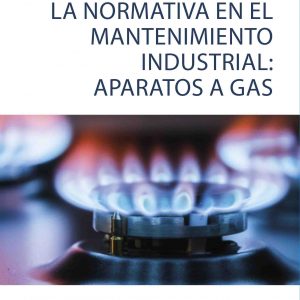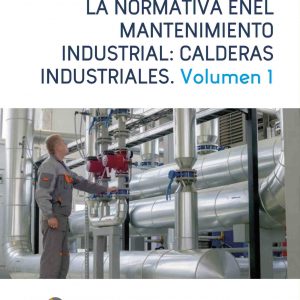
Curso de Race Track Setup Masterclass – From Theory to Solutions
Contáctanos:
[email protected]
+34 912 171 879
Este curso es indispensable para aquellos que deseen tener una exitosa carrera en el campo del diseño de pistas de carreras. Con la Masterclass de Configuración de Circuitos de Carreras, aprenderás todas las técnicas y teorías necesarias para diseñar soluciones efectivas y de alto rendimiento en este apasionante sector profesional. Este conocimiento te permitirá destacarte en tu trabajo y te abrirá las puertas a nuevas oportunidades laborales en empresas dedicadas al diseño y construcción de circuitos de carreras.
La duración total del curso es de 60 horas.
Índice de subtemas para cada una de las secciones de tu curso Race Track Setup Masterclass – From Theory to Solutions:
- Introduction to Race Track Setup as a topic:
- Introduction to Race Track Setup Fundamentals
- Understanding the Importance of Tire Pressure
- Exploring the Effects of Suspension Geometry
- Analyzing Aerodynamics in Race Track Setup
- Utilizing Technology for Data Analysis in Race Track Setup
- High level goals of race car setup:
- Introduction to High Level Goals of Race Car Setup
- Understanding Aerodynamics in Race Car Setup
- Importance of Weight Distribution in Race Car Setup
- Optimizing Suspension Geometry for Race Car Performance
- Maximizing Tire Grip for Faster Lap Times
- How the driver feels oversteer and understeer:
- Understanding Oversteer
- Recognizing Understeer
- Effects of Oversteer on Driving
- Consequences of Understeer on Handling
- Techniques to Correct Oversteer and Understeer
- Why yaw acceleration capability is important:
- Understanding yaw acceleration capability
- The role of yaw acceleration in race car performance
- Factors influencing yaw acceleration capacity
- Measuring and optimizing yaw acceleration
- Practical applications of yaw acceleration in race track setup
- Tire behavior as it relates to handling – deformation, slip and saturation:
- Tire deformation and its impact on handling
- Tire slip and its effects on performance
- Saturation of tires and its consequences for handling
- Understanding the relationship between tire behavior and vehicle dynamics
- Optimizing race track setup for improved handling based on tire behavior
- Load transfer and how its 3 components can be used to tune handling.:
- Understanding Load Transfer
- Vertical Load, Lateral Load, and Longitudinal Load
- Tuning Handling with Vertical Load
- Tuning Handling with Lateral Load
- Tuning Handling with Longitudinal Load
- Summary of fundamental theory and intro to advanced theory:
- Introduction to Race Track Setup
- Fundamental Theory of Race Track Dynamics
- Advanced Theory of Race Track Dynamics
- Understanding Race Track Surface Conditions
- Application of Theory in Race Track Setup
- Logical steps to setting up a road biased sports car:
- Introduction to Road Biased Sports Cars
- Understanding Suspension Geometry
- Optimizing Tire Pressures and Temperatures
- Balancing Aerodynamics for Road Bias
- Setting up Braking and Acceleration
- Changing basic handling balance with tire static loads, alignment, tire temps:
- Understanding tire static loads
- Importance of alignment for handling balance
- Monitoring tire temperatures for optimal performance
- Adjusting handling balance through tire pressures
- Fine-tuning handling balance with camber and toe settings
- Changing handling balance for different corner types with brakes and diff lock.:
- Corner Types Overview
- Understanding Handling Balance
- Adjusting Brake Balance for Different Corner Types
- Utilizing Differential Lock for Better Cornering
- Advanced Techniques for Changing Handling Balance
- Changing handling balance in different corner phases with suspension setup:
- Understanding Corner Phases
- Effects of Suspension Setup on Handling Balance
- Adjusting Suspension for Entry Phase
- Optimizing Suspension for Mid-Corner Phase
- Tuning Suspension for Exit Phase
- Race car aerodynamics – further complication for suspension setup:
- Race car aerodynamics introduction
- Understanding the impact on suspension setup
- Aerodynamics and tire behavior
- Optimizing suspension setup for aerodynamic effects
- Advanced techniques for managing aerodynamic forces
- How all possible vehicle parameters affect performance criteria:
- Engine Performance
- Aerodynamics
- Suspension Setup
- Tire Selection
- Weight Distribution
- Getting to the best setup of a high downforce race car in the least steps:
- Understanding downforce and its effects on race car handling
- Optimizing aerodynamic components for maximum downforce
- Adjusting suspension settings for high downforce conditions
- Fine-tuning tire pressures and camber angles for optimal performance
- Testing and refining setup changes on the track
- Solving handling issues of a high downforce car:
- Solving Understeer Issues
- Solving Oversteer Issues
- Adjusting Aerodynamic Balance
- Optimizing Suspension Settings
- Dealing with High-Speed Handling Challenges
- Solving some typical suspension related issues:
- Suspension Geometry Adjustment
- Tire Pressure and Camber Issues
- Spring Rate and Damper Tuning
- Wheel Alignment Problems
- Bump Steer and Roll Center Optimization
- Bonus section:
- Introduction to Race Track Setup
- Understanding Vehicle Dynamics
- Optimizing Tire Performance
- Aerodynamics and Downforce
- Advanced Suspension Tuning Techniques
- Conocimientos básicos de mecánica automotriz
- Experiencia previa en la configuración de pistas de carreras
- Conocimientos de teoría de diseño de pistas de carreras
- Capacidad para utilizar herramientas de medición y software especializado
- Conocimientos de normativas y regulaciones de seguridad en pistas de carreras
- Profesionales de la industria automotriz
- Estudiantes de ingeniería mecánica
- Amantes del deporte motor
La realización del curso será completamente on-line y evaluado a través de un examen. Una vez superado el mismo, podrás recibir tu título, válido para toda España.
Una vez hayas completado el curso, puede realizar el test relacionado y obtener tu título.
-

APARATOS A GAS. LA NORMATIVA EN EL MANTENIMIENTO INDUSTRIAL.: Tests y Ejercicios. (Español) Tapa blanda – 20 Enero 2023
20,90 € Ir a ver el producto -

LA NORMATIVA EN EL MANTENIMIENTO INDUSTRIAL: CALDERAS INDUSTRIALES. Volumen I
25,00 € Ir a ver el producto -

LA NORMATIVA EN EL MANTENIMIENTO INDUSTRIAL: CALDERAS INDUSTRIALES. Volumen II
35,00 € Ir a ver el producto -
¡Oferta!

LA NORMATIVA EN EL MANTENIMIENTO INDUSTRIAL: INSTALACIONES DE GAS. VOLUMEN I: Tests y Ejercicios. (Español) Tapa blanda – 2 Enero 2023
El precio original era: 25,99 €.23,00 €El precio actual es: 23,00 €. Ir a ver el producto
En la caja superior se muestra algo de material de apoyo, visita nuestra tienda para ver nuestro catálogo completo.






